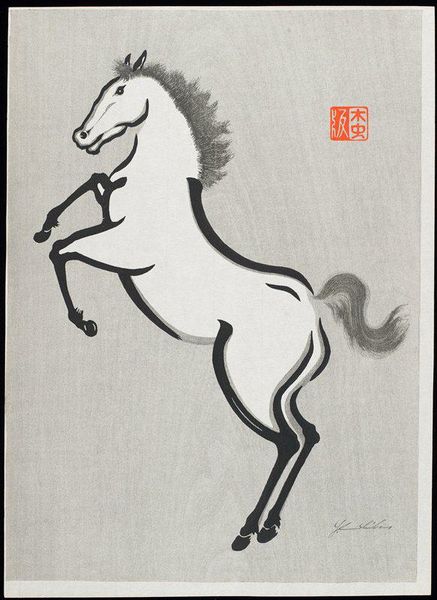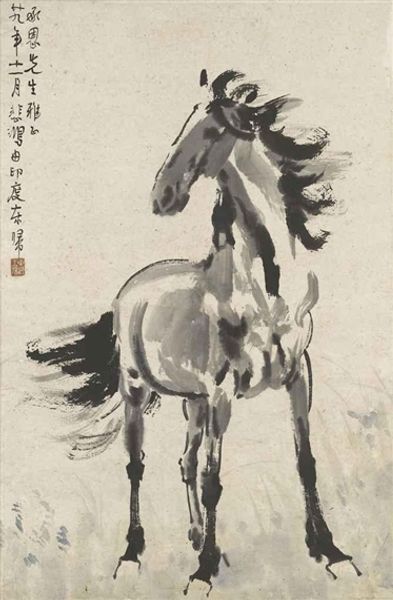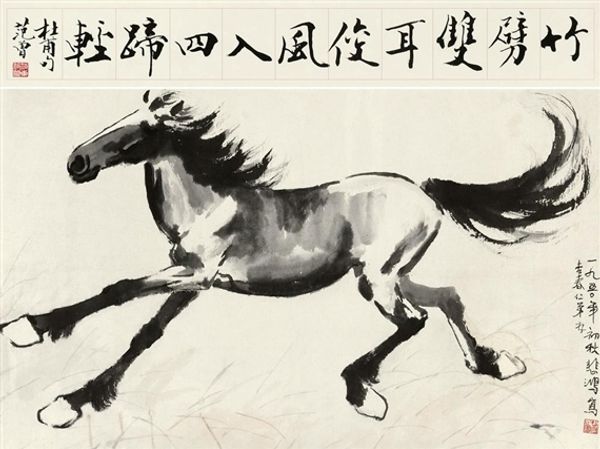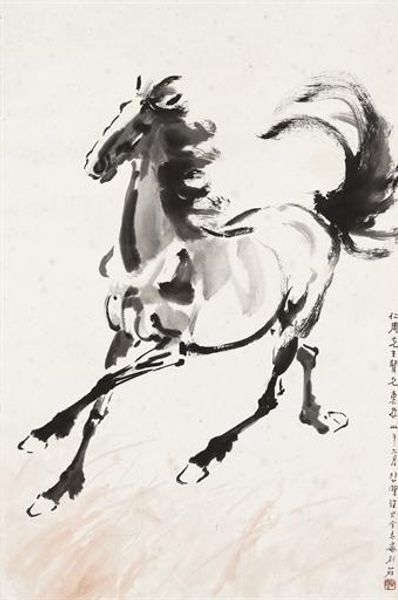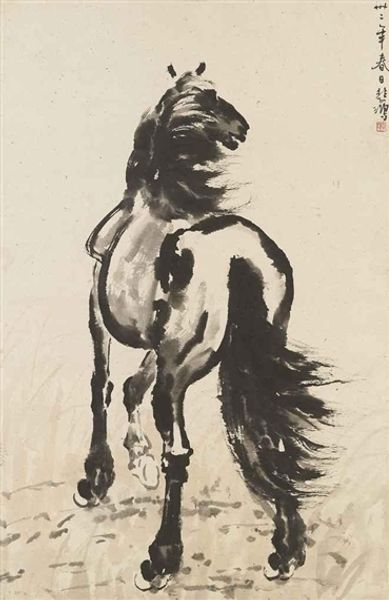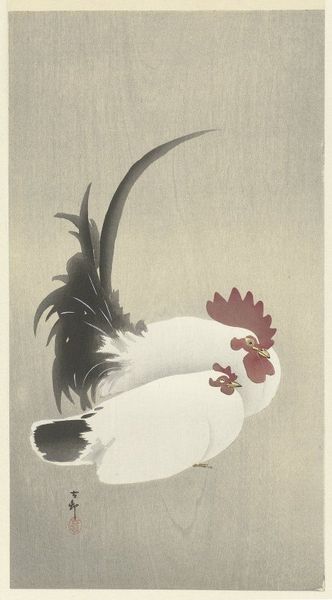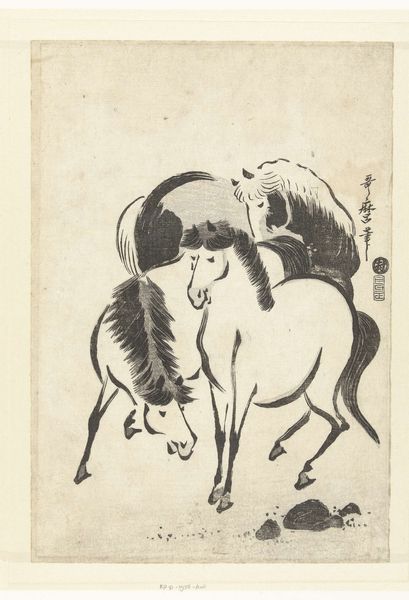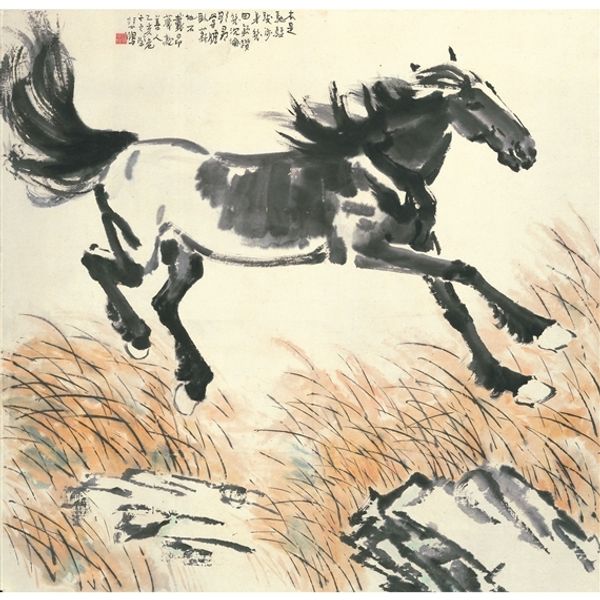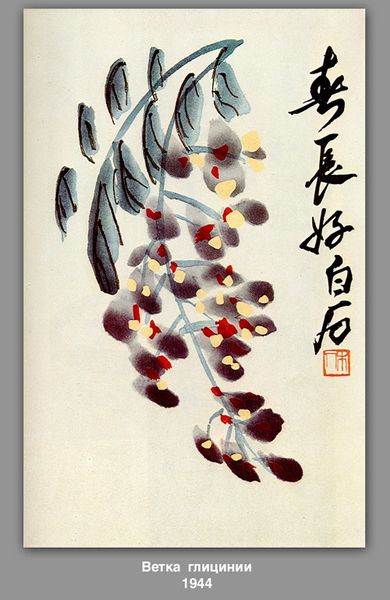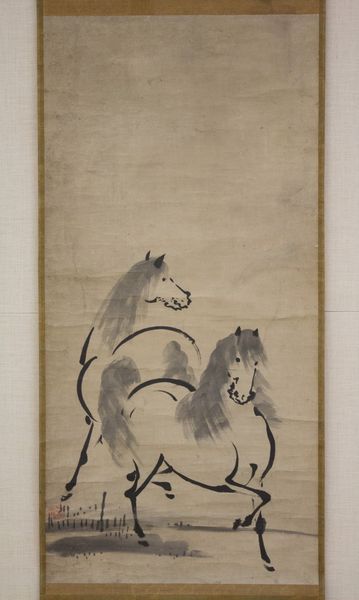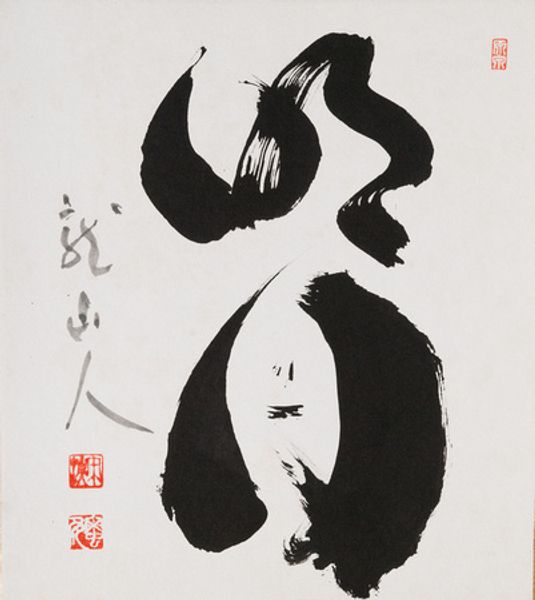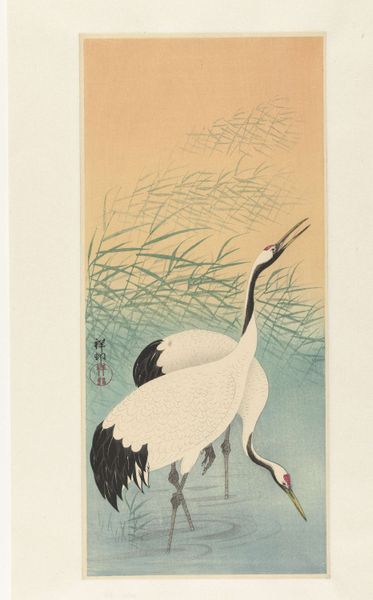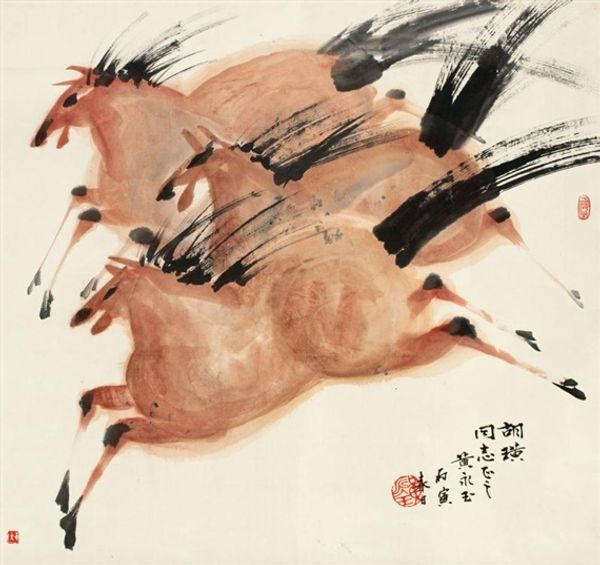
Dimensions: 14 x 9 3/4 in. (35.5 x 24.7 cm) (image)
Copyright: No Known Copyright
Editor: This is "Horse (C)", a 1960 woodblock print by Urushibara Mokuchū, residing here at the Minneapolis Institute of Art. It feels…spirited, almost joyful, despite the simple composition. What stands out to you? Curator: Immediately, the horse's posture suggests a reaching, a yearning. What is it looking towards? Is it the sun, the heavens, or something within itself? Think of horses as symbols through history: power, freedom, even untamed instinct. This horse, with its neck arched, might represent aspiration. Editor: That’s interesting. I was so focused on the simplification of form that I didn’t think about aspiration. The bold, black lines contribute to the symbolic representation, right? Curator: Absolutely. Lines have always been culturally charged. Think of calligraphy. These strong lines lend definition, and within Japanese aesthetics, they can capture the essence of the subject – its Ki, or spirit. Look at how the artist suggests form with minimal shading. Does that remind you of anything? Editor: Now that you mention it, this reductive quality makes me think about caricatures...like exaggerating a gesture for expressive effect. Curator: Exactly! The exaggerated arch of the neck, the delicate legs… the artist captures the very idea of 'horse,' doesn't it? Caricature taps into shared understandings and memory. It simplifies to amplify, speaking to collective experiences and recognition. It connects with us instantly, across time. What do you take away now? Editor: I see now that it’s more than just a pretty picture of a horse. There's cultural depth to unpack, the line work, the aspirations. Curator: And it encourages us to remember how animals have appeared across culture, from cave paintings to emoji. Visual language repeats and evolves.
Comments
No comments
Be the first to comment and join the conversation on the ultimate creative platform.
